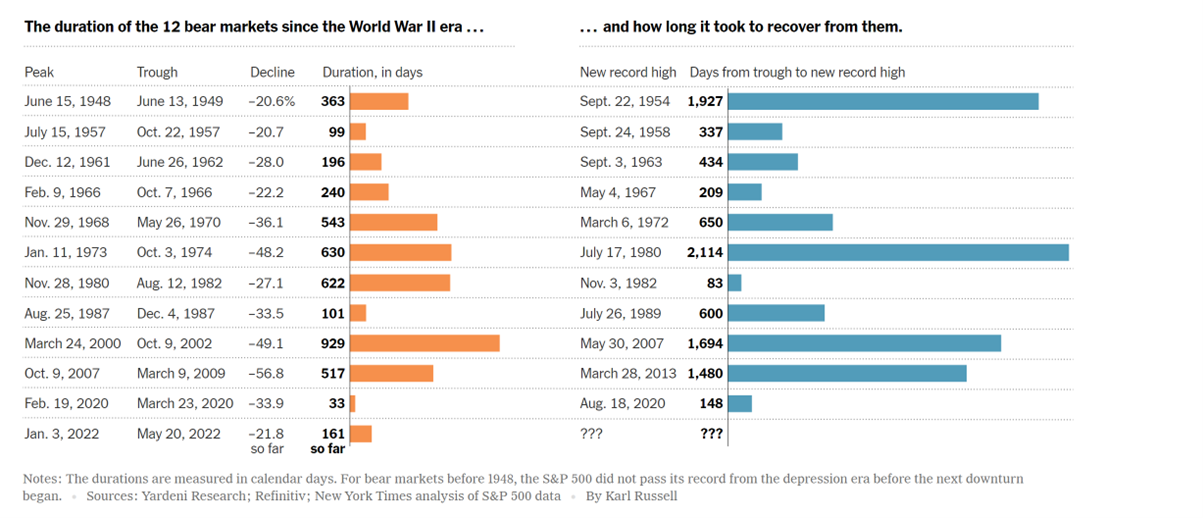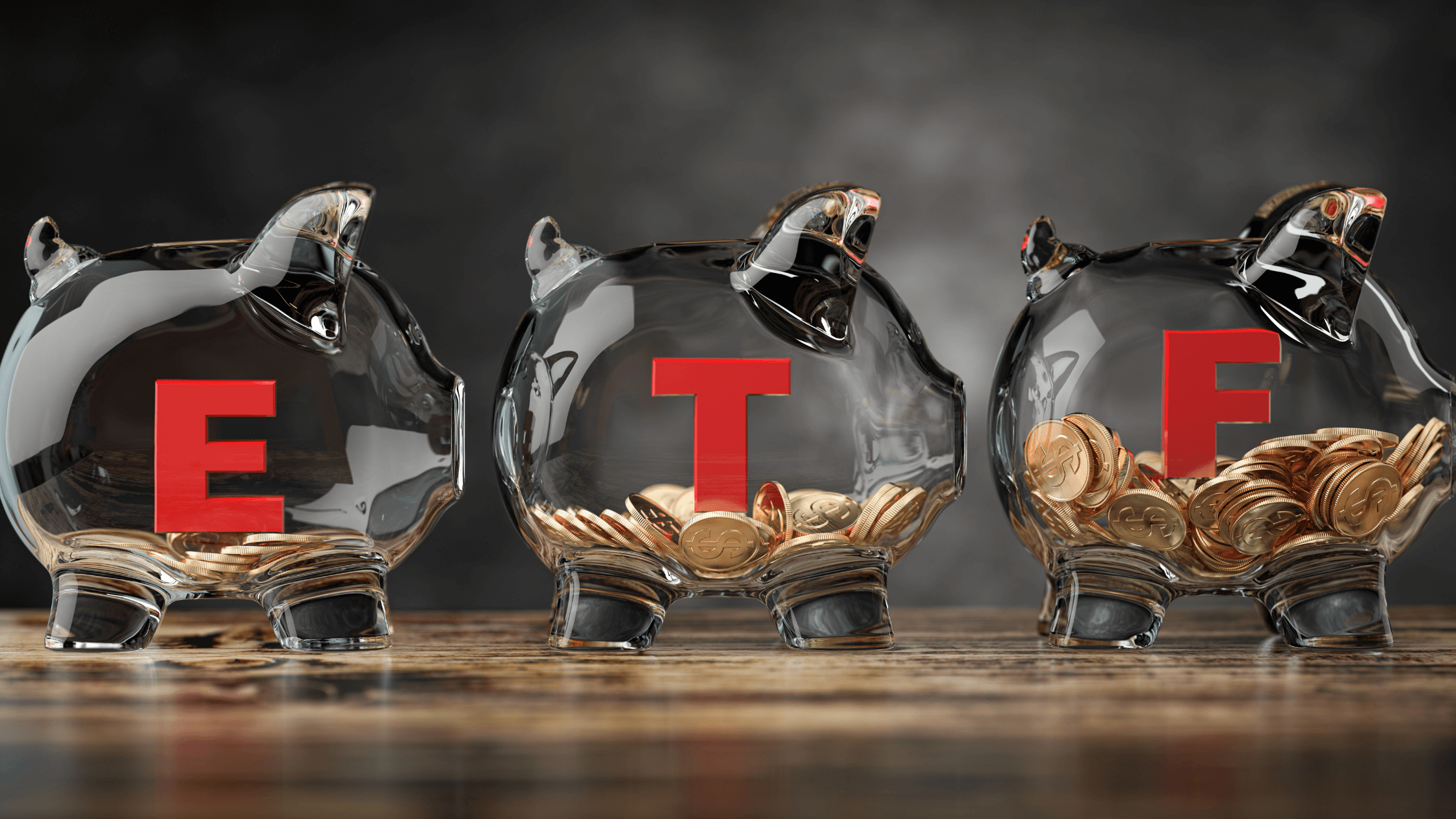How Should You Invest During a Bear Market?
June 15, 2022

In the US, the benchmark S&P 500 Index has fallen 22% from its January peak, officially entering a bear market.
For investors who are new to investing, what is a “bear market”?
A bear market is defined as a prolonged drop in investment prices. Generally, a bear market happens when a broad market index falls by 20% or more from its most recent high.
In fact, the tech-heavy NASDAQ Composite Index, was already in bear market territory, is now down over 31% since the start of this year.
In a bear market, we usually see excessive investor pessimism and low confidence in stocks as an asset class. This is usually reflected by investors’ rush to sell their shares quickly.
When the market turns bearish, almost all stocks within the market will begin to decline, even if some of the individual companies are reporting good news and earnings growth.
So, how should you invest amid a bear market? Here are five ways to navigate an increasingly volatile outlook for stocks.
1. Knowing your investment profile
As I mentioned earlier, it is important to return to basics and that means knowing your investment profile.
I have written about this in an article on “How to Start Investing: A Beginner’s Guide for Getting Started.”

This is important because, as seen from the chart above, the recoveries from bear markets vary.
What starts out as a mild bear market could prove to be the 78% dot-com bubble in 2000 to 2002 or the 54% decline in the market during the GFC period between 2007 to 2009.
While the conventional wisdom for younger investors is not to do anything during steep downturns in the market because markets tend to rise again eventually, older workers nearing retirement may not have the option to wait it out.
Older workers nearing retirement, or those who have already retired, should ensure that only their portion of money that won’t be needed for the next five to ten years should be in stocks.
This is why it is important to revisit your investment profile to ensure that the asset allocation in your portfolio is resilient to withstand a bear market.
2. Dollar-cost averaging
Dollar-cost averaging (DCA) is a methodical investing method that allows you to invest a certain amount of money periodically.
This helps investors to stay invested and take emotion out of the equation. One of the ways emotions affect investing behaviour is that we feel losses more intensely than we perceive gains.
It also helps smooth out your purchase price over time, ensuring you don’t pour all your money into a stock at its high while still taking advantage of market dips.
As mentioned earlier, the stock market will eventually rebound and by focusing on potential gains, the bear markets can be good opportunities for long-term investors to build up their investment portfolio at lower prices.
3. Diversify your holdings
Whether it is a bull market or a bear market, it is important for investors to diversify their holdings.
A bear market, however, shows the importance of a diversified portfolio. It is true that most companies continue to see declines in prices during a bear market, but not necessarily by the same proportion.
This is why a well-diversified portfolio will help investors minimise losses during a bear market.
It is important that instead of just focusing on growth companies, your portfolio consists of defensive assets as well, including dividend-paying stocks.
A simple way to achieve diversification is by investing into Exchange-Traded Funds (ETFs). You can read more about the basics of ETFs here.
4. Invest in sectors that perform well in a recession
It is also important for investors to look more closely at sectors that continue to perform well during a recession.
While the economy has not yet entered into a recession, there are fears that the Fed’s Quantitative Tightening could trigger one.
Among some of the sectors that are resilient during a recession include consumer staples and utilities.
In the current environment, as inflationary pressure is a key concern, investors can also tap into energy sector as that will benefit from rising commodity prices.
5. Hedge with options
Hedging with options is also another strategy that investors can deploy.
However, options are usually short-term trades that require a lot of time, effort and analysis by investors.
It is also more risky when compared to investing in stocks.
You can read more about the differences between options and stocks here.
For those of you who would want to dabble in options, we have introduced two basic strategies as a guide for you: selling a covered call and strip straddle to benefit from a bear market.
Bear markets are no reason to panic
The temptation to sell your investments when markets plummet is hard to resist. It becomes even more obvious in a bear market.
Bear markets test the resolve of all investors and it is important to know that bear markets are no reason to panic.
It is a good time to revisit your portfolio and ensure that it’s well-diversified.
By understanding how much is at stake, your risk exposure and the time you have to recoup your losses, you should be able to make better investment decisions.
Instead of focusing on the headline news, focus on the long term.
Over the last decade, many people have gotten used to the stock market going up. The current bear market is a good reminder that it is not a guarantee, especially in the near term.
Disclaimer: ProsperUs Investment Coach Billy Toh doesn’t own shares of any companies mentioned.

Billy Toh
Billy is deeply committed to making investment accessible and understandable to everyone, a principle that drives his engagement with the capital markets and his long-term investment strategies. He is currently the Head of Content & Investment Lead for Prosperus and a SGX Academy Trainer. His extensive experience spans roles as an economist at RHB Investment Bank, focusing on the Thailand and Philippines markets, and as a financial journalist at The Edge Malaysia. Additionally, his background includes valuable time spent in an asset management firm. Outside of finance, Billy enjoys meaningful conversations over coffee, keeps fit as a fitness enthusiast, and has a keen interest in technology.







